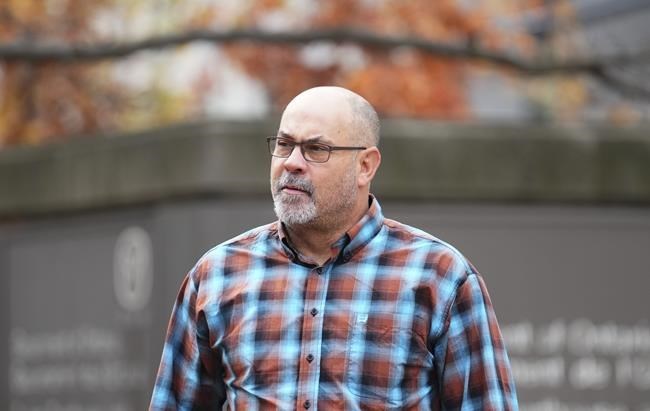OTTAWA — The lawyers involved in the criminal trial of two "Freedom Convoy" organizers are finally confronting the central question of the case: whether or not the 2022 protest that gridlocked Canada's national capital for weeks was a legal expression of Charter rights.
Chris Barber and Tamara Lich, two of the most prominent leaders of the protest, have maintained that their only objective throughout the convoy was to organize and oversee a peaceful and legal demonstration, and that they encouraged people to follow the law.
Their lawyers told court repeatedly this week that the right to peaceful assembly and free expression is protected under the Canadian Charter of Rights. The Crown, however, argues that rights have limits, and that a protest isn't legal just because it's peaceful.
Barber and Lich are both charged with mischief and intimidation, and also face multiple charges that involve counselling others to break the law.
They helped to bring thousands of big rigs and other vehicles to Ottawa, accompanied by massive crowds, as part of last year's sprawling, disruptive protest against COVID-19 public health restrictions, vowing not to stand down until the federal government complied with their demands.
On Feb. 14, after weeks of protests in the shadow of Parliament Hill, along with several similar but unaffiliated protests at the Canada-U. S. border and provincial legislatures, the federal government proclaimed a public order emergency. It was the first invocation of the Emergencies Act since it replaced the War Measures Act in 1988.
Barber's lawyer, Diane Magas, read the emergency proclamation aloud to the court Wednesday.
"We do further specify that the special temporary measures that may be necessary for dealing with the emergency, as anticipated by the Governor in Council, are measures to regulate or prohibit any public assembly — other than lawful advocacy, protest or dissent," Magas recited.
"That’s a very key factor, in my submission," she told the judge.
Magas made the argument in response to the Crown's allegation that Barber and Lich worked together so closely that they should be considered co-conspirators, which would mean evidence against one of them would apply to both.
The defence says the Crown would have to prove they conspired to break the law, rather than to organize a peaceful and lawful protest.
"There is not one scintilla of evidence, either direct or indirect, to suggest a common unlawful purpose" involving Barber, Magas told court.
In the Crown's view, neither the protest nor the actions of Lich and Barber were lawful, said Crown attorney Siobhain Wetscher, an observation that amused Ontario court Justice Heather Perkins-McVey.
"I know," Perkins-McVey laughed. "That's why we're here."
Wetscher's co-counsel, Tim Radcliffe, pointed to dozens of pleas by Lich and Barber for protesters to remain peaceful, unified and loving. Those statements were akin to asking people to remain non-violent, but not to remain lawful, he said.
"That was the plea to those on the bandwagon," Radcliffe said.
The defence hasn't mounted any constitutional challenges, which makes the question of whether the protest was a constitutionally protected form of expression or assembly irrelevant, Wetscher added. "We’re dealing with criminal offences."
Radcliffe said all Perkins-McVey has to consider is whether streets were blocked and property was interfered with, and whether Lich and Barber were party to those crimes.
The Crown is expected to continue its argument Thursday, but has not yet indicated when they believe the alleged conspiracy began, or who was involved besides Barber and Lich.
Magas took the court through a timeline of events during the Freedom Convoy protest, including examples of times Barber encouraged protesters to follow the advice of police and leave downtown Ottawa in order to set up camp outside the city.
In one private text exchange, a protester told Barber they had arrived at a staging area on Coventry Road, outside the city's core, during the second week of the protest.
"Ok, stay there or go to exit 88," Barber responded, referencing a rural staging area about 45 kilometres outside of Ottawa. Both staging areas had been recommended by police.
This report by The Canadian Press was first published Nov. 29, 2023.
Laura Osman, The Canadian Press

